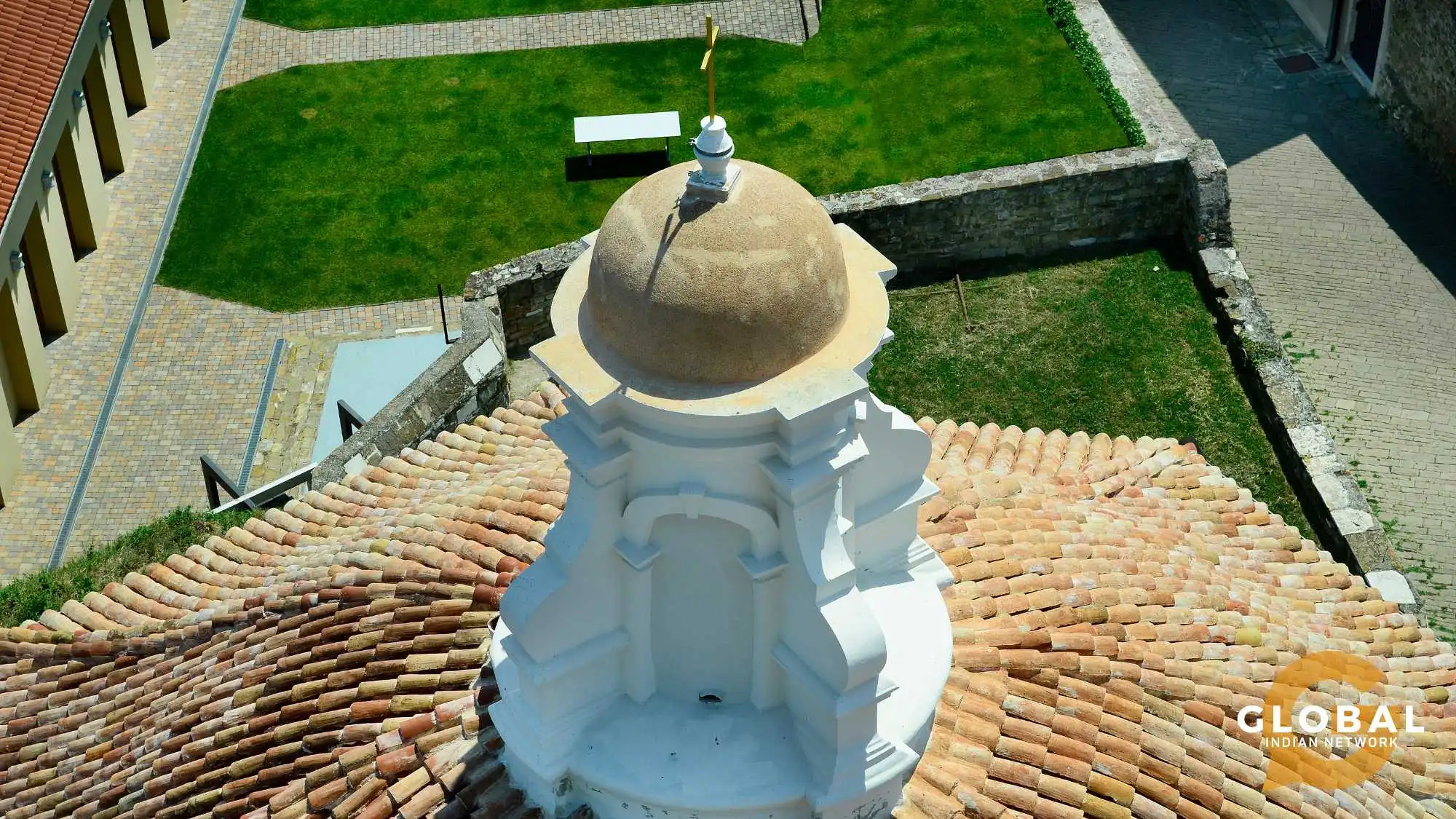The nation of Slovenia, spanning a mere 20,271 sq km in the heart of central Europe, is one of the most vibrant cultural melting pots you will come across on the continent. This small and compact country, sitting at the junction of Mediterranean, Alpine and Balkan topographies, is as densely endowed with scenic landscapes as it is with cultural and ethnic richness. Boasting a history that can be traced back 60,000 years, Slovenia holds its native forms of expression and traditions in high esteem, taking immense pride in its unique cultural identity.
Join us in this blog as we dive deep into the different shades of Slovenian culture and religion.
Table of Contents
History and Background
The history of Slovenia follows an extensive trajectory from the Roman Empire through the Second World War, down to its identity as a modern Republic under the European Union.
In the classical ages, the land of Slovenia was predominantly home to a mixture of Illyrian, Celtic and Roman cultures before a group of people called Alpine Slavs or proto-Slovenes pushed up the Sava-Drava-Mura (Danube system) river basin in the 6th century and integrated into it.
The 7th century Slovenia saw the brief reign of Franco Samo, whose empire is the first recorded independent Slavic state. Persisting late into the 8th century, it was eventually absorbed into the Frankish empire. The 10th century brought Holy Roman rule to the land, the ruins of which gave way to the Austro-Hungarian Empire of the Hapsburg dynasty in 14 CE.
Lasting way into the early 20th century, this period is when Slovenia imbibed most of German and Austrian cultures. Although modern Slovenians perceive this period as a political calamity, it caused the nation to be integrated into the Roman Catholic Church as well as Western European civilisation.
After the First World War in 1918, the Slovenes merged with other Slavic groups to form the Kingdom of Yugoslavia, along with the Serbs and Croats, which fell under Nazi control during the Second World War. With the end of the war, Fascism was overthrown under the leadership of the communist Josip Broz Tito, ushering Slovenia into socialism.
With the dwindling of communist power in Eastern Europe, Slovenia began to assert its autonomous national spirit, finally breaking away from the Yugoslav Federation in 1991 with the foundation of a democratic multiparty political system. Since then, Slovenia has emerged as the most prosperous nation among the formerly socialist East-European nations, attracting massive waves of immigration from the neighbouring Balkan regions.
Understanding Slovenian Culture and Religion
The cultural strains inherited from Slavic, German, Italian and Austrian influences have since adapted to absorb the symptoms of modern-day immigration and globalisation. Despite its manifold historical roots and the culture it has inherited from the past, Slovenia identifies most intensely with its central European identity.
Slovenians are highly aware of their position as a bridge between Eastern and Western Europe, having mostly avoided the ethnic conflicts and civil unrest that have afflicted its former Yugoslavian neighbours. With this awareness, Slovenia has successfully developed its identity as an independent republic while achieving a balanced relationship between its Slavic culture and Western influences.
Let us look closely at the different aspects that govern Slovenian social and cultural life.
Language
The official language in Slovenia is the native Slovene language, also known as the Slovenian language. It is a Western variant of the South Slavic language group, emanating from the Balto-Slavic branch of the Indo-European linguistic family. The Slovene written language uses the Latin alphabet, unlike many of its related Slavic languages, which are written in the Cyrillic alphabet. It also boasts as many as 46 subregional dialects.
While Hungarian and Italian are recognised as co-official languages, Croatian and Serbian are also widely spoken, mostly among immigrant groups hailing from its former Yugoslavian neighbours and their descendants. Acquisition of foreign languages is also heavily encouraged in Slovenia, the most popular being English and German, followed by Italian, French, and Spanish.
Ethnicity and Religion
Despite its clear separation of religion from political life, religion occupies a significant portion of daily social and cultural life in present-day Slovenia. Although it does not dominate society in any way, it is intertwined with the values and traditions that dictate Slovenian life and identity.
Demographics
Slovenia is named after the Slovenes, a group of South Slavs who were the original settlers in the area. They contribute to 87 per cent of the population. Other ethnicities like Hungarians and Italians constitute a significant enough portion of the population to earn the status of indigenous minorities under the Slovenian Constitution, ensuring them seats in the National Assembly.
The series of migrations in the 20th century, followed by the mid-1990s Bosnian War, brought an inflow of over 20,000 refugees into Slovenia, who were eventually assimilated into its population. Ethnic Serbs account for about 2 per cent, Croats 3 per cent, and other various ethnic groups constitute about 7 per cent of the non-native Slovenian population.
Roman Catholics constitute the dominant demographic, the Catholic Church being the prime Christian denomination in Slovenia, closely followed by Protestantism and Eastern Orthodoxy. Catholicism took root in the 8th century when the Slavic tribes native to the territory accepted it as their new religion. According to a 2021 Report on International Religious Freedom: Slovenia, the Catholic demographic stands at 1.5 million – tantamount to 71 per cent of the population – while the Protestant community stands at approximately 10,000 persons.
The Orthodox Christian and Muslim communities arrived mainly in the 1970s, with the influx of refugees and immigrants from Serbia, Bosnia, Herzegovina, and other non-European foreign workers. The Serbian Orthodox Church estimates its community to range between 30,000 to 45,000 persons; the Islamic Community of Slovenia measures the Muslim population at approximately 100,000, amounting to 5 per cent of the population.
Religious minorities such as the Buddhist, Hindu, and Jewish communities are comprised of around 3000 persons. Several smaller communities around the nation also follow modern Slavic pagan religions or Slavic Native Faiths, more commonly known as Rodnovery and sometimes as Slavic Neopaganism. Additionally, 18 per cent of Slovenes identify as atheists or agnostic.
Legal Provisions
The Slovenian Constitution grants freedom of religion and the right to practise and express individual beliefs, both in public and private. The law treats religion and state as separate entities and provides the right of non-compliance with legal duties and requirements that contradict one’s religious beliefs (provided it causes no infringement on the rights of other persons). Citizens are allowed conscientious objection to military service for religious reasons.
It also prohibits differential treatment and protects against religious discrimination, hatred and intolerance. It has strict penal codes in place for the punishment of hate crimes, which include publicly provoking religious hatred, undermining the significance of the Holocaust, and endangerment of security to life and property. Punishment for these offences entails imprisonment for up to two to five years.
Slovenian law allows churches and other religious communities to register with the Slovenian government to obtain official status, granting them the right to buy property and establish associations without taxation. Although unregistered religious organisations are allowed the same for their religious services, they are taxed on such property. Registered religious groups may also engage in public services to the military, police, prisons, hospitals, and other social care institutions.
Religious groups gain official status by applying to and being approved by the Ministry of Culture (MOC). It lays down certain tenets and legal provisions on nondiscrimination that religious groups must respect and abide by. The Office for Religious Communities under the MOC is responsible for maintaining records on registered religious communities and legally assisting them with these provisions. It also allocates funds for religious activities in the budget of the Slovene government, which goes into arranging discussions and gatherings to address communal concerns.
Education
Given the history of Slovenia, it is not surprising that Holocaust education in schools is mandated by law. Lessons focused on the history of the Holocaust inside and outside the country are taught in schools in schools with the accompaniment of a special booklet published by the Ministry of Foreign Affairs as a part of the Holocaust education curriculum. This is done to promote awareness of the history of Jews and antisemitism in Europe before and during World War II, which persists into the contemporary conscience of Central and East Europe.
The government prescribes education on world religions in the curricula of public schools. Religious instruction in public schools is prohibited from being included as an official part of the curriculum during school hours, but there are no prescribed penalties for violating this rule. Voluntary and optional religious sessions can be freely operated in public schools and preschools outside school hours.
Festivals and Holidays
Easter and Christmas are prime festive periods in the Slovenian annual calendar. However, Slovenians have wonderfully combined these Christian holidays with native Slovene pagan and folk culture. During the one-week-long observance, the streets of cities and towns across the country fill up with markets, feasts, processions, and choirs.
The Kurentovanje festival is a pre-Lentian parade rooted in folklore and pagan fertility rites. People dressed as the mythical figure, Kurent, donning sheepskin, masks and fur caps, course through the town to chase away winter and usher in spring.
Among summer events is the Ljubljana Summer Festival, held in July and August, with cultural attractions like music, theatre, and dance performances. The pastoral festival Kravji Bal or ‘Cows’ Ball’, held in September in Bohinj, celebrates the return of cattle and cowherds to the valleys. Several other regional folkloric festivals are celebrated in their own unique light in the towns of Kamnik and Škofja Loka.
Culinary Culture
Be it the iconic Štruklji or a hot and hearty bowl of Mineštra, Slovenian cuisine is, in essence, a product of its varied climate and geographical location at the crossroads of different European topographies, nationalities and ethnicities. Slovenians pride themselves in their culinary heritage, based purely on farm-fresh homemade ingredients, and make practical efforts towards preserving and passing on their rich tradition to the forthcoming generations.
Of the chief culinary attractions are the Idrijski žlikrofi, the EU-protected regional dumpling dish originating in the mining town of Idrija, stuffed with a potato filling mixed with sauteed onions. The Ajdovi žganci, also known as buckwheat spoon bread – enjoying an almost national status among foods – is a simple dish prepared by dry frying buckwheat flour.
The prekmurska gibanica, a speciality of Slovenia’s northernmost city, Murska Sobota, is a pastry filled with cottage cheese, poppy seeds, walnuts, and apples. Among festive foods are potica, a delicious dessert with various fillings, and traditional braided loaves served for Christmas. Slovenia is also famous for its authentic vine and honey production methods; local festivals and workshops throughout the year exhibit the sheer variety and quality of vine and honey produced in Slovenia.
Conclusion
21st-century Slovenia emerges as a country that has embraced modernity and secularism despite the cultural imprint of Catholicism, which remains palpable across its art, festivals, and societal norms. Slovenians’ deep affinity to nature and its vibrant folk traditions, further coloured by its fusion with foreign cultural forms, paints the nuanced picture of a nation that cherishes its heritage while embracing the dynamism of the contemporary world. Ultimately, the interconnectedness of Slovenian culture and religion in the social landscape posits a nation and a people resiliently committed to community, goodwill and progress.
FAQs
What is the main religion in Slovenia?
While there is no official religion in the Republic of Slovenia, the dominant religion is Christianity. The Roman Catholic Church estimates its membership at 1.5 million, which equates to around 82 percent of the population.
What is the culture of Slovenia?
The culture of Slovenia is an amalgamation of Germanic, Romance, and predominantly Slavic cultures. The historical influence of diverse ethnic groups, such as Romans, Germans and Slavs, combined with modern-day immigration of foreign ethnicities, has transformed Slovenia into a melting pot of various culture.
What are Slovenian people known for?
Slovenians are known for their efficient local food production practices. Their delectable, high-quality cuisine is made entirely from homegrown or farm-sourced ingredients. Also known for their vineyards and beekeeping tradition, Slovenians are a very hard-working, modest and honest populace with affable, sporting hearts.










[…] You Might Be Interested In: A Deep Dive into Slovenian Culture and Religion […]
[…] Culture and tradition are the two poles of a society that make the place suitable for people to live in, as these terms are interchangeable and dependent on each other but different from each other. […]
[…] has always been integral to Aboriginal people and their culture, representing their deep connection with the land and spiritual beliefs. For thousands of years, […]